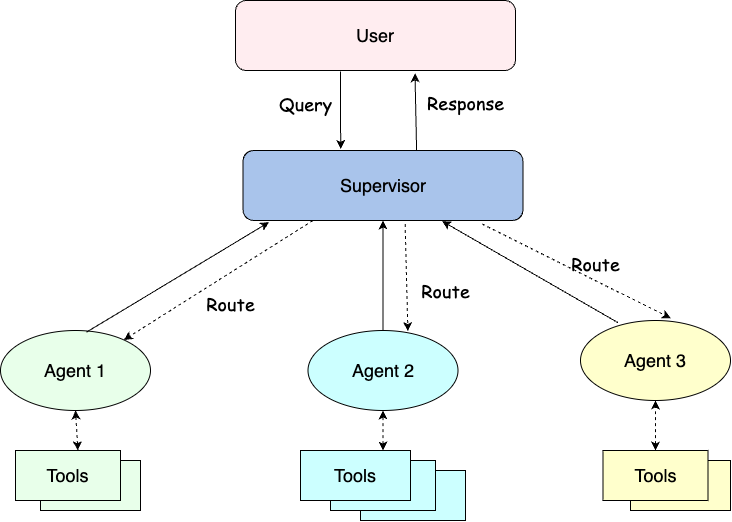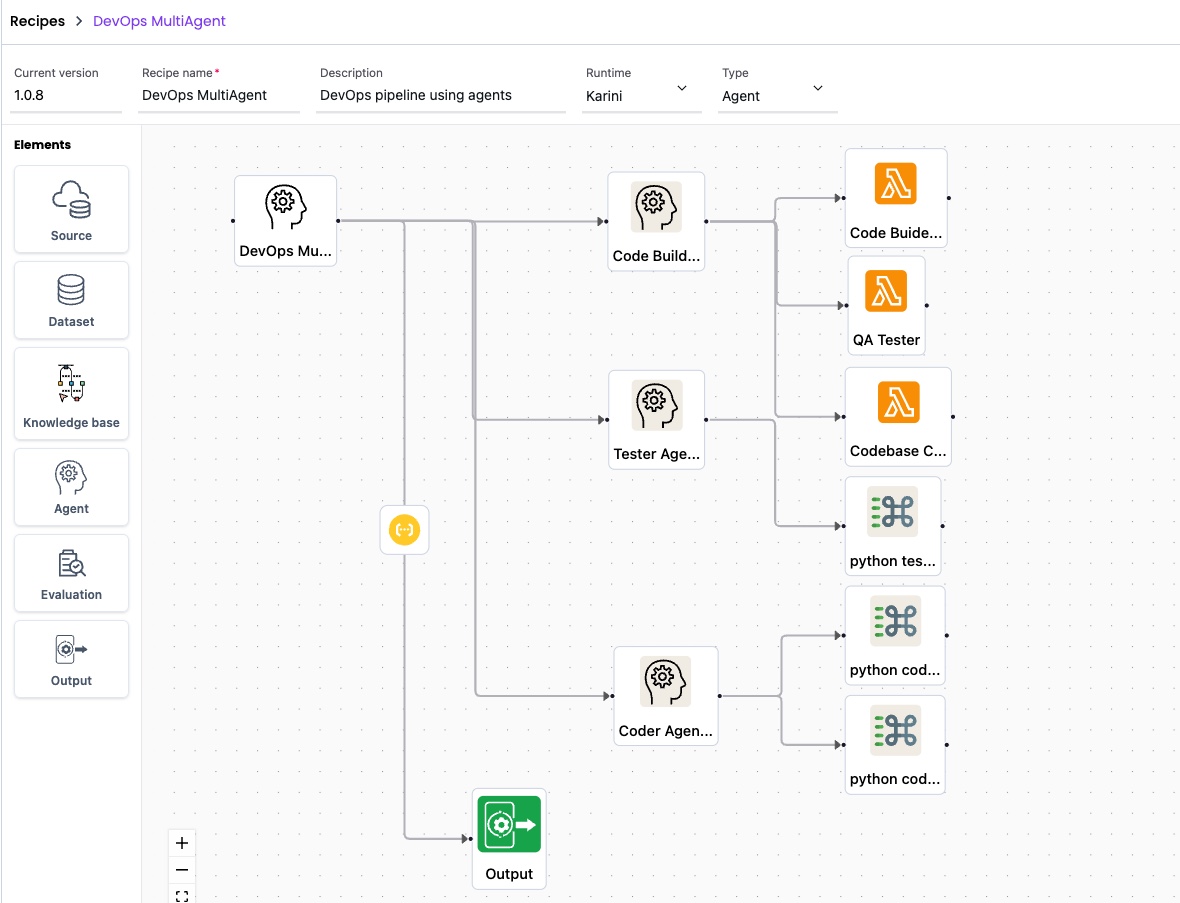The Future of AI with Multi-Agent Systems
While large language models (LLMs) have shown remarkable capabilities in various applications, the future of AI is even more promising with the evolution of AI agents. These agents, which simplify using LLMs to build sophisticated systems for complex tasks, are transforming the AI landscape. They break down intricate functions into manageable parts, tap into external systems to expand their knowledge, and monitor results to ensure the initial query's objectives are met. As we move forward, multi-agent approaches are set to revolutionize AI, harnessing the collaborative potential of multiple agents to tackle increasingly complex tasks with greater efficiency and effectiveness.
According to this research More agents is all you need, LLMs' performance improves with the number of agents involved, suggesting this method can enhance LLMs' capabilities, especially for complex tasks.
 .
.
Karini AI is proud to announce support for building multi-agent systems using its user-friendly and intuitive agentic prompt playground and no-code recipe canvas. This powerful system empowers you to create a wide range of applications, from simple tasks to complex challenges, with ease and comfort.
Karini AI's Multi-Agent Capabilities
At Karini AI, we understand the importance of context and prompt in a multi-agent architecture. That's why we've developed an agile and innovative prompt playground that extensively empowers you to build and test complex agentic and multi-agent prompts. Our platform allows you to experiment with various model combinations and parameters, monitor agent behavior through live traces, and access performance statistics to choose the best model for your needs confidently.
Multi-agent applications can be seamlessly orchestrated using Karini’s no-code recipe canvas and deployed as copilots to be accessed by end users. Here is an example of a multi-agent recipe that utilizes three agents—a Coder Agent, a Tester Agent, and a Code Builder agent—to build a robust DevOps engineering pipeline.
 .
.
Key Features of Karini's Multi-Agent Workflows
Streamlined Development Environment: Karini’s prompt playground offers developers a dedicated platform to independently build and test each agent, ensuring they have the necessary tools and models. This modular approach allows for precise control over individual agent performance before integrating them into a comprehensive multi-agent system.
Advanced Safety Mechanisms: Karini’s recipe platform enhances agent workflows by incorporating advanced safety features, such as guardrails that halt processing in case of violations. This helps maintain the integrity and reliability of the system. Addressing a common challenge in agent-based systems, Karini provides features that prevent infinite loops, safeguard the workflow, and ensure smooth operation.
Integrated Agent Memory: The platform includes a built-in memory, allowing developers to track and review the interactions between agents over time, providing valuable insights for refinement.
Detailed Tracing and Observability: Karini AI offers in-depth tracing and observability features, enabling developers to closely monitor and analyze agent behaviors and system performance.
Clear Task Distribution: Task performance improves when each agent operates with instructions and few-shot examples powered by individually fine-tuned language models and various tools. Dividing responsibilities among specialized agents enhances overall outcomes, as each agent can concentrate on a specific task instead of navigating a wide array of tools.
Effective Modularity: Multi-agent systems break down complex issues into smaller, manageable tasks handled by specialized agents and language models. This approach allows for each agent's independent evaluation and enhancement without impacting the entire system. By grouping tools and focusing responsibilities, agents are more likely to succeed in their designated tasks, leading to better overall outcomes.
Reusability of Agents: Once developed, agents can be repurposed for various applications, creating a versatile ecosystem of agents. These agents can collaborate to tackle different challenges using well-structured recipes in Karini.
Embracing Diversity in Agents: Incorporate diverse perspectives within agents to enhance outputs and minimize hallucinations and biases, similar to the benefits seen in diverse human teams.
Precise User Feedback Mechanism: The platform’s ability to capture fine-grained user feedback empowers developers to continually optimize and refine their multi-agent systems, enhancing overall performance and user satisfaction.
Multi-Agent CoPilot in Action
The following video demonstrates the Multi-agent copilot built using the recipe showcased in the above diagram, which functions as a DevOps engineer, assisting users in generating, reviewing, testing code, and building projects using the AWS CodeBuild Service.
Imagine a team of AI agents with unique expertise working together to achieve a common goal. This is the essence of multi-agent systems. They allow collaboration among various AI agents, each contributing specialized skills to solve complex problems. For instance, a multi-agent system could streamline a DevOps engineering pipeline, where different agents handle tasks like coding, testing, and building. By working together, these agents can create more comprehensive and effective solutions than a single AI model could, leaving you reassured and satisfied with the outcomes. It's a community of AI working together for a common goal.
With Karini AI, you can swiftly build, test, and deploy complex multi-agent workflows as recipes and copilots. Contact us to learn how to solve complex problems using Karini AI's multi-agent Generative AI workflows.
